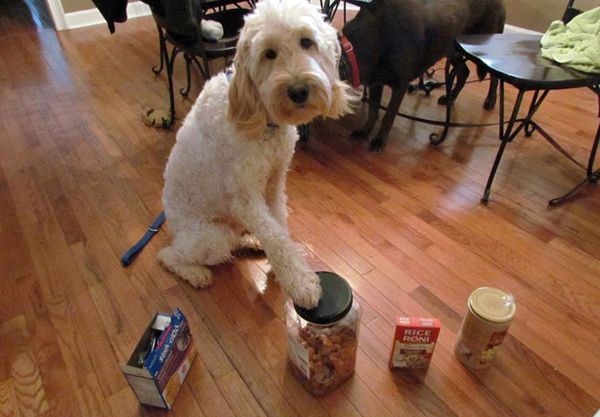With the help of their ears, tail, eyes, and paws, dogs quickly show us what’s on their mind. Often we even wish we could put ourselves in the dog’s head to better understand them. While that’s unfortunately not possible, interpreting our dogs’ body language is one way to better understand our dogs. You can often see in dogs that the paw in dogs often waits in the air, or the four-legged friend gives you the paw without a command. But what does it mean when the dog lifts its paw?
Dog raises paw – possible reasons

Hunting behavior
A raised front paw when standing or sitting is called the “pointing posture”, which can usually be observed together with hunting behavior. The dog is usually very tense in this posture; The head, back, and tail form a straight line and the dog is focused rigidly on the prey. When approaching the game, the dog stops again and again and one front leg stays in the air. This is an inhibited forward movement and the dog keeps waiting so as not to frighten the game. This behavior can often also be observed in non-hunting dogs, which are simply very concentrated.
Why does my dog raise its paw when scratching?
If the dog puts his paw on you while you are cuddling or petting him, the dog shows that he simply feels comfortable. The paw in this case is the canine “I love you!”.
Approaching strange dogs
Even when approaching strange dogs, it can often be observed that the dog stops and its paw is hanging in the air. This is an inhibited forward movement, however, the rest of the body is not straight towards the other dog as in the case of hunting behavior, but mostly the body language seems rather defensive. You can see that the dog may turn its head away, run a small arc or lick its tongue over its lips. The slow approach and inhibited movements serve to show other dogs that you are traveling with peaceful intentions.
Why is my dog poking me with his paw?

If the dog paws at Man, nudge him or even puts his paw on his arm, this is often a request for attention, petting, attention, or even a play request.
Against the human

If the dog paws at you, nudges you or even puts its paw on your arm, this is often a request for affection, pats, attention, or even a request to play. If the dog puts his paw on you while you are cuddling or petting him, the dog shows that he simply feels comfortable. The paw in this case is the canine—“I love you!”. The placed or raised front paw has nothing to do with dominant behavior towards humans. The four-legged friends also like to “paw” each other to encourage their fellows to play. Often this behavior is followed by a head tilt.
Appeasement
Raising the front paw and “pawing” are also a part of active and passive humility. This behavior is often exhibited in exciting or threatening situations – including towards other dogs as well as other people. Here the dog can repeatedly move its paw up and down in the air as if it were waving. This behavior can also be shown while sitting or standing.
Why do dogs raise their front leg?

A raised front paw when standing or sitting is called the “pointing posture”, which can usually be observed together with hunting behavior. This behavior can often also be observed in non-hunting dogs, which are simply very concentrated.
Dog raises paw – an indication of injuries

Another reason for lifting a paw may be an injury, as lifting the paw is intended to minimize pain. If the dog raises its paw several times or hobbles, you should play it safe and take a closer look at the leg and the paw of the four-legged friend. Small stones, cuts or cracks can often cause great pain. If the raising of the paw becomes noticeable or is even accompanied by shaking and whining, you should rather take your four-legged friend to the vet.
What to do if the dog is limping?

If the dog raises its paw several times or hobbles, you should play it safe and take a closer look at the leg and the paw of the four-legged friend. If the raising of the paw becomes noticeable or is even accompanied by shaking and whining, you should rather take your four-legged friend to the vet.






























